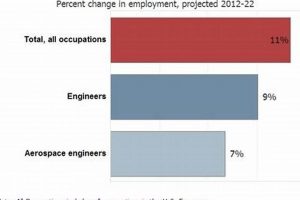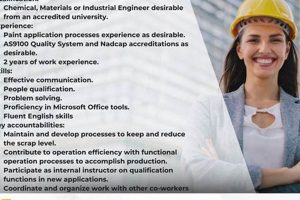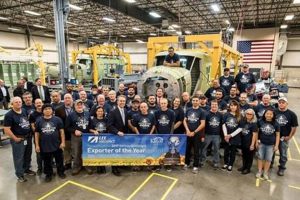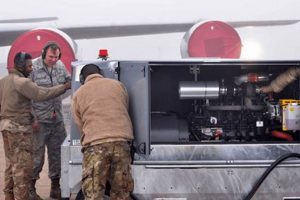Positions at the National Aeronautics and Space Administration (NASA) within the aerospace sector encompass a wide array of specialized roles. These roles involve designing, developing, testing, and operating spacecraft, aircraft, and related technologies. Examples include aerospace engineers, mission specialists, and researchers focused on aeronautics and space exploration.
Employment opportunities within this sphere are crucial for advancing scientific understanding of the universe, developing innovative technologies for air and space travel, and inspiring future generations to pursue careers in science, technology, engineering, and mathematics (STEM) fields. Historically, these roles have driven significant technological advancements with broad societal benefits, impacting areas from communication and navigation to materials science and medicine.
This article delves into the various career paths available, educational requirements, and the application process involved in securing a position within this exciting and impactful field.
Securing a position at NASA in the aerospace field requires strategic planning and a dedicated approach. The following guidelines offer insights to maximize candidacy.
Tip 1: Educational Foundation: Emphasize a strong academic background in relevant STEM fields. A bachelor’s degree is typically the minimum requirement, with advanced degrees often preferred for specialized roles. Focus on coursework related to aerospace engineering, mechanical engineering, electrical engineering, physics, or computer science.
Tip 2: Gain Relevant Experience: Seek internships or research opportunities related to aerospace. Participation in projects involving spacecraft design, flight simulations, or data analysis enhances practical skills and demonstrates commitment.
Tip 3: Highlight Technical Skills: Showcase proficiency in software relevant to aerospace, such as CAD/CAM software, MATLAB, or programming languages like Python or C++. Demonstrated ability to analyze data and solve complex problems is essential.
Tip 4: Tailor Applications: Customize resumes and cover letters to align with the specific requirements of each position. Clearly articulate how skills and experience directly address the needs outlined in the job description.
Tip 5: Network Strategically: Attend industry conferences and career fairs to connect with NASA recruiters and professionals in the aerospace sector. Informational interviews can provide valuable insights into the organizational culture and specific roles.
Tip 6: Showcase Projects and Publications: Include relevant projects and publications in the application materials. This demonstrates expertise and contributions to the field. Detail the scope of the project, the applicant’s role, and the results achieved.
Tip 7: Security Clearance Awareness: Understand the security clearance requirements for the targeted position. Some positions necessitate a background check and security clearance process.
These strategies provide a pathway to navigate the competitive landscape. Dedication and strategic preparation are key to maximize prospects.
The next section explores specific career paths and the potential for advancement within NASA’s aerospace division.
1. Engineering
Engineering disciplines are integral to realizing NASA’s aerospace missions. These disciplines provide the fundamental expertise to design, build, and operate complex systems for space exploration, aeronautics research, and scientific advancement. Engineering roles ensure mission success and enable groundbreaking discoveries.
- Aerospace Engineering
Aerospace engineers are responsible for designing and testing aircraft and spacecraft. They develop aerodynamic models, structural analysis, and propulsion systems. For example, they may design the heat shield for a spacecraft re-entering Earth’s atmosphere or optimize the wing design of an experimental aircraft. Their contributions directly impact the performance and safety of NASA’s vehicles.
- Mechanical Engineering
Mechanical engineers focus on the mechanical systems within aerospace vehicles and ground support equipment. They design and analyze mechanical components, such as engines, turbines, and landing gear. A mechanical engineer might work on improving the efficiency of a rocket engine or developing a robotic arm for use on the International Space Station. Their work is crucial for reliable and efficient operation.
- Electrical Engineering
Electrical engineers are responsible for the electrical systems that power and control aerospace vehicles. They design and develop power distribution systems, communication networks, and control systems. For instance, an electrical engineer might design the solar power system for a satellite or develop the control algorithms for an autonomous spacecraft. Their expertise ensures reliable electrical functionality.
- Software Engineering
Software engineers develop and maintain the software that controls aerospace vehicles, analyzes data, and simulates mission scenarios. They create flight control software, data processing algorithms, and simulation tools. A software engineer might develop the guidance and navigation software for a lunar lander or create a simulation to model the effects of radiation on spacecraft electronics. Their work enables complex operations and informed decision-making.
These engineering disciplines, while distinct, often intersect and collaborate within the context of NASA’s aerospace endeavors. The successful execution of missions necessitates a cohesive engineering approach, where each discipline contributes its specialized knowledge to achieve common goals, thus highlighting the importance of Engineering in NASA Aerospace jobs.
2. Research
Research constitutes a foundational element within opportunities at NASA’s aerospace facilities. The agencys ability to undertake groundbreaking space missions and aeronautical advancements is directly correlated to the depth and breadth of its research initiatives. These activities provide the theoretical and experimental basis for innovative technologies and mission designs. For instance, NASA’s research into advanced materials is essential for developing spacecraft components capable of withstanding extreme temperatures and radiation in space. Similarly, ongoing studies in propulsion systems aim to improve fuel efficiency and reduce mission costs.
Positions directly involved in research span diverse scientific and engineering fields. Scientists conduct experiments on the International Space Station, analyze data from planetary probes, and develop new models for understanding climate change. Engineers contribute by designing and testing novel technologies such as electric propulsion systems or autonomous navigation algorithms. The practical application of this research is evident in every facet of NASA’s operations, from designing more efficient aircraft to planning future missions to Mars. Data analysis, modeling, and simulation roles are integral to these research endeavors.
In summary, research is not merely a supporting function but an intrinsic component of positions at NASA, driving progress and shaping the future of aerospace exploration and technology. The investment in research enables NASA to address challenges, push technological boundaries, and expand human knowledge of the universe.
3. Mission Operations
Mission Operations represents a critical link in the chain of activities defining employment at NASA. This area encompasses the real-time control, monitoring, and management of spacecraft, satellites, and associated ground systems. The effectiveness of these operations directly influences mission success and data acquisition. Personnel in these positions are responsible for ensuring that scientific instruments are properly calibrated, spacecraft trajectories are accurately maintained, and communication links remain stable. Consequently, competence in Mission Operations is a highly valued skill within NASA’s workforce.
The impact of Mission Operations roles can be observed in various NASA initiatives. For example, during the Mars rovers’ exploration, Mission Operations teams continuously monitored the rovers’ health, analyzed data transmitted back to Earth, and sent commands to guide the rovers’ movements. Similarly, during the deployment of the James Webb Space Telescope, Mission Operations personnel oversaw the complex unfolding sequence of the telescope’s mirrors and sunshield, ensuring each step was executed precisely. This meticulous oversight ensured the telescope’s operational readiness. Practical understanding of Mission Operations provides a concrete perspective on how personnel directly contribute to scientific discovery and technological advancement.
In summary, Mission Operations forms a central pillar of NASA’s work, requiring a specialized skillset and unwavering commitment to detail. Roles within this domain are indispensable for achieving mission objectives and maximizing the return on investment in space exploration. Challenges inherent in these positions include managing unforeseen events, adapting to evolving mission parameters, and maintaining vigilance during extended periods of operation. The understanding of the practical implications of these roles helps illustrate the multifaceted nature of a career within NASA’s aerospace program.
4. Project Management
Project Management constitutes a critical function within NASA’s aerospace programs. The successful execution of space missions and technological development initiatives depends heavily on effective planning, organization, and resource allocation. NASA’s endeavors, often involving complex systems and long timelines, necessitate rigorous project management methodologies. Delays, cost overruns, and technical failures can result from inadequate project oversight. Therefore, individuals in project management roles are responsible for ensuring that projects adhere to budget, schedule, and performance requirements. For example, the development of a new spacecraft propulsion system requires careful coordination among engineers, scientists, and contractors, with project managers overseeing all aspects of the project lifecycle.
Project managers at NASA utilize specialized tools and techniques to monitor project progress, identify risks, and implement corrective actions. They are responsible for defining project scope, developing work breakdown structures, managing stakeholder expectations, and facilitating communication among team members. The complexity of NASA’s projects often demands expertise in areas such as systems engineering, risk management, and earned value management. The James Webb Space Telescope, for instance, involved intricate project management to coordinate contributions from multiple international partners and to ensure the successful integration of its various components. Its launch and deployment success underscored the critical importance of project management in achieving mission objectives.
In summary, project management is integral to the success of NASA’s aerospace activities. Effective project managers contribute to achieving mission goals, managing risks, and optimizing resource utilization. The skills and knowledge of project management professionals are indispensable in navigating the challenges inherent in complex space exploration and technological development initiatives. The success of future missions and the continued advancement of aerospace technology depend, in part, on the competence and dedication of individuals in these roles.
5. Data Analysis
Data Analysis is an indispensable function within the context of employment opportunities at NASA. The ability to extract meaningful insights from vast datasets is paramount to informed decision-making across diverse aerospace applications. Efficient data analysis contributes directly to optimizing mission parameters, improving spacecraft design, and enhancing scientific discovery.
- Mission Planning and Optimization
Data Analysis plays a crucial role in the planning and optimization of space missions. Analyzing historical mission data, trajectory simulations, and resource constraints allows for the identification of optimal launch windows, trajectory profiles, and resource allocation strategies. For example, analysis of orbital mechanics data informs the selection of efficient routes for interplanetary spacecraft, minimizing travel time and fuel consumption. This directly impacts mission feasibility and cost effectiveness.
- Spacecraft Performance Monitoring
The continuous monitoring of spacecraft performance relies heavily on real-time Data Analysis. Telemetry data from onboard sensors is analyzed to assess the health and status of critical systems, such as propulsion, power, and communication. Anomaly detection algorithms identify deviations from expected behavior, triggering alerts and enabling timely intervention. This enables predictive maintenance and prevents potential system failures, ensuring mission continuity.
- Scientific Data Interpretation
A significant portion of NASA’s mission objectives involves the collection and analysis of scientific data. Data Analysis techniques are employed to process raw data from telescopes, planetary probes, and Earth observation satellites, transforming it into meaningful scientific insights. Image processing algorithms enhance the resolution of astronomical images, while statistical analysis reveals patterns in climate data. These insights further our understanding of the universe and our planet.
- Risk Assessment and Mitigation
Data Analysis contributes to risk assessment and mitigation in aerospace operations. Analyzing historical failure data, performance trends, and environmental factors allows for the identification of potential hazards and vulnerabilities. Probabilistic risk assessment models are used to quantify the likelihood and consequences of various failure scenarios, informing the development of mitigation strategies. This promotes safety and reliability in high-stakes aerospace environments.
In conclusion, Data Analysis is not merely a supporting activity but an intrinsic component of numerous positions at NASA. The ability to effectively analyze data underpins critical decision-making processes, enabling advancements in space exploration and scientific discovery. The increasing volume and complexity of data in aerospace necessitates a skilled workforce capable of leveraging advanced analytical techniques.
6. Technology Development
Technology Development constitutes a fundamental pillar upon which NASA’s aerospace endeavors are built. Opportunities at NASA are inherently linked to the continuous development and refinement of technologies essential for space exploration, aeronautics research, and scientific discovery. These advancements not only drive mission capabilities but also shape the skill sets and expertise sought in personnel.
- Advanced Materials Science
The development of new materials with enhanced properties is crucial for creating spacecraft capable of withstanding extreme environments. This includes materials with high strength-to-weight ratios, resistance to radiation, and tolerance to extreme temperatures. For instance, NASA’s development of heat-resistant tiles for the Space Shuttle necessitated expertise in materials science and engineering. Individuals involved in these activities contribute directly to enabling safer and more efficient space travel.
- Autonomous Systems and Robotics
The exploration of remote and hazardous environments requires the development of autonomous systems and robotics. These systems enable tasks such as planetary exploration, satellite servicing, and in-space manufacturing without direct human intervention. Expertise in robotics, artificial intelligence, and control systems is essential for designing and implementing these technologies. The development of the Mars rovers, for example, depended on advancements in autonomous navigation and sample collection technologies.
- Propulsion Systems
Improving the efficiency and performance of propulsion systems is critical for reducing mission costs and enabling long-duration space travel. This includes the development of electric propulsion systems, advanced chemical rockets, and potentially fusion-based propulsion technologies. Engineers and scientists working on these systems are responsible for designing, testing, and optimizing engine performance. Advancements in propulsion technology are essential for future missions to Mars and beyond.
- Communication Systems
Reliable communication is essential for maintaining contact with spacecraft and transmitting data back to Earth. This necessitates the development of advanced communication systems capable of operating over vast distances and in challenging environments. Expertise in signal processing, antenna design, and network protocols is critical for designing and implementing these systems. The Deep Space Network, for example, relies on advanced communication technologies to maintain contact with spacecraft throughout the solar system.
The interconnectedness of these technological facets underscores the dynamic nature of careers within NASA’s aerospace domain. The ability to adapt to emerging technologies and contribute to their development is a key attribute sought in prospective employees. NASA’s ongoing investment in Technology Development not only drives mission success but also fosters a culture of innovation and continuous learning, shaping the skillsets required for positions within the agency.
7. Space Exploration
Space Exploration represents the core mission of NASA, driving technological innovation and scientific discovery. It shapes the landscape of positions and dictates the specialized skills sought within NASAs workforce. These roles are integral to planning, executing, and analyzing data from missions that extend human understanding of the universe.
- Mission Design and Planning
Positions in mission design and planning are fundamentally linked to space exploration objectives. Engineers and scientists collaborate to define mission parameters, select appropriate spacecraft technologies, and develop operational strategies. The success of a mission to Mars, for example, hinges on meticulous planning that considers trajectory optimization, resource constraints, and risk mitigation. This directly influences job requirements and specialized expertise needed at NASA.
- Spacecraft Engineering and Development
Space exploration drives the need for innovative spacecraft technologies. Positions in spacecraft engineering and development involve designing, building, and testing spacecraft components, propulsion systems, and communication networks. The development of heat shields for atmospheric re-entry and advanced sensors for scientific data collection are critical aspects of these roles. These engineers are pivotal in enabling space exploration missions.
- Scientific Research and Data Analysis
Space exploration generates vast amounts of scientific data, requiring expertise in data analysis and interpretation. Scientists analyze data from telescopes, planetary probes, and Earth observation satellites to uncover new insights about the universe, our solar system, and our planet. The analysis of data from the James Webb Space Telescope, for example, contributes to understanding the formation of galaxies and the search for exoplanets. These scientific positions are directly tied to the goals of space exploration.
- Robotics and Automation
Space exploration often involves sending robotic explorers to remote and hazardous environments. Positions in robotics and automation focus on designing, building, and operating robotic systems for tasks such as planetary exploration, sample collection, and in-situ resource utilization. The Mars rovers, for example, demonstrate the capabilities of robotic explorers in conducting scientific research on another planet. These job roles are vital to expanding the reach of space exploration.
These facets of space exploration demonstrate its profound influence on the array of opportunities at NASA. The pursuit of knowledge and technological advancement in space directly shapes the skills, expertise, and dedication sought in NASA employees, ultimately contributing to the success of future missions and scientific discoveries.
Frequently Asked Questions
This section addresses common inquiries regarding employment opportunities within NASA’s aerospace sector, providing clarity on qualifications, application procedures, and career pathways.
Question 1: What educational qualifications are typically required for positions at NASA related to aerospace?
A bachelor’s degree in a STEM field, such as aerospace engineering, mechanical engineering, electrical engineering, physics, or computer science, is generally the minimum requirement. Advanced degrees (Master’s or Ph.D.) are often preferred, particularly for research-oriented or specialized positions.
Question 2: What types of experience are considered valuable when applying for aerospace positions at NASA?
Relevant experience includes internships at aerospace companies or research institutions, participation in aerospace-related projects (e.g., designing and building rockets or satellites), research publications, and demonstrated proficiency in relevant software tools and technologies (e.g., CAD/CAM, MATLAB, Python).
Question 3: How does one navigate the USAJOBS website to find specific positions at NASA?
Filter search results by agency (“National Aeronautics and Space Administration”), location, and job series (e.g., “Aerospace Engineer” or “Physical Scientist”). Carefully review the job announcement for specific qualifications, duties, and application instructions. Ensure all required documents are submitted before the deadline.
Question 4: What is the security clearance process for certain positions at NASA?
Certain positions require a security clearance, which involves a background check and investigation to determine suitability for access to classified information. The level of clearance required depends on the sensitivity of the position. Applicants will be notified if a security clearance is required and will be provided with instructions on how to initiate the process.
Question 5: What are the common challenges encountered in positions involving project management at NASA?
Challenges include managing complex projects with long timelines and large budgets, coordinating contributions from diverse teams and international partners, mitigating technical risks, and adapting to evolving mission requirements. Effective communication, problem-solving skills, and a thorough understanding of project management methodologies are essential.
Question 6: How can one enhance their prospects of securing a position at NASA following graduation?
Focus on developing a strong academic foundation, gaining relevant experience through internships or research opportunities, networking with NASA professionals, and tailoring application materials to align with the specific requirements of each position. Consider pursuing advanced degrees to enhance qualifications.
In summary, securing a position requires dedication, strategic preparation, and a thorough understanding of NASA’s mission and values. It is important to proactively enhance knowledge in your expertise and always look for new innovative ways in aerospace engineering.
The following section provides concluding remarks on NASA’s aerospace career pathways.
NASA Aerospace Jobs
This exploration has illuminated the diverse landscape of opportunities within NASA, emphasizing the qualifications, skills, and commitment required for securing a position within its aerospace division. From engineering and research to mission operations and data analysis, the breadth of career paths contributes to the agency’s core mission of space exploration and scientific discovery. The agency demands specialized skills, continuous learning, and a dedication to pushing the boundaries of technological advancement.
The pursuit of knowledge and innovation in space exploration remains a vital national and global endeavor. Aspiring professionals in the aerospace field should prioritize rigorous academic preparation, relevant experience, and a proactive approach to navigating the competitive job market. By embracing these principles, individuals can contribute to NASA’s continued success in exploring the cosmos and inspiring future generations of scientists and engineers.







